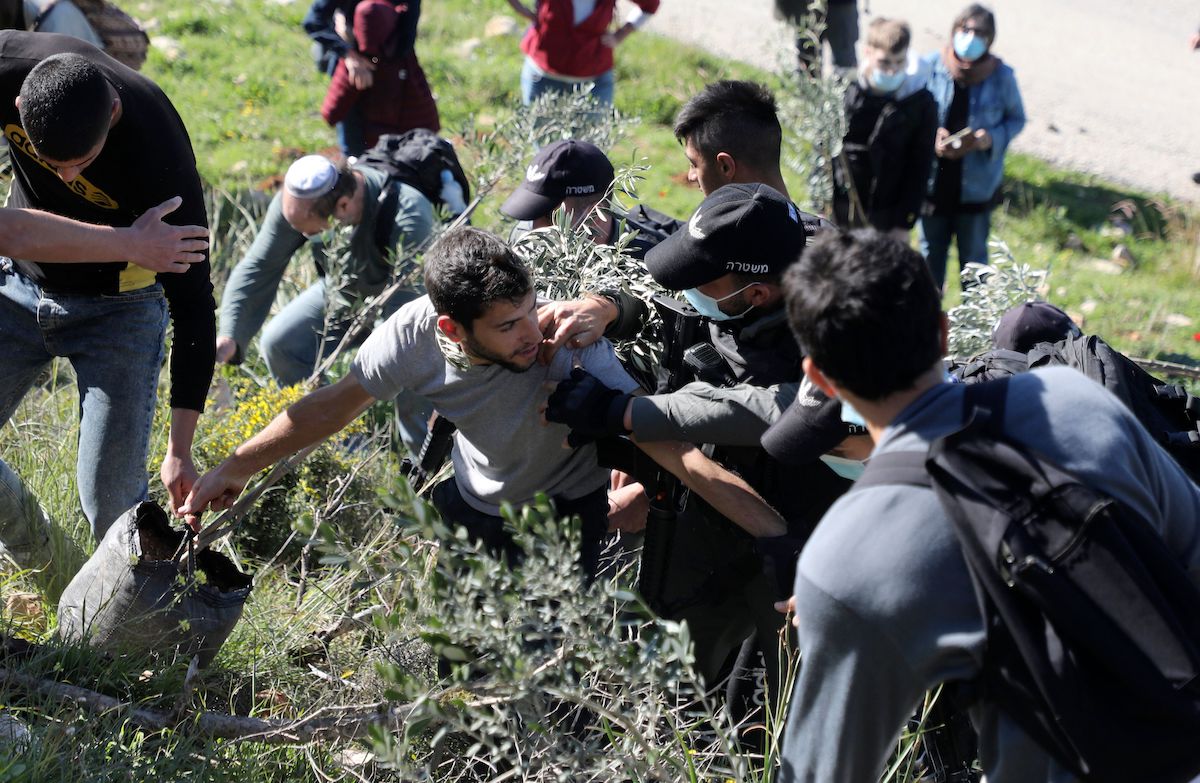Israeli forces Friday afternoon suppressed an anti-land-pillage rally in Beita town and Beit Dajan village, south and east of the West Bank city of Nablus, injuring some 20 people, according to medical sources.
Israeli forces used fatal violence to disperse a rally called for to protest the construction of the new colonial settlement of Givat Eviatar atop Jabal Sabih (Sabih Mountain), near Beita, as well as the seizure of lands belonging to the villagers of Beita, Huwarra, and Za‘tara to inaugurate a new settler-only bypass road.
Director of the Palestinian Red Crescent’s (PRC) Emergency Department in Nablus, Ahmad Jibril, said that one protestor was injured by a rubber-coated steel bullet and 14 others suffocated from tear gas inhalation atop the mount.
Meanwhile, Israeli soldiers violently dispersed the participants of the rally called for to defend Palestinian-owned land threatened with confiscation, east of Beit Dajan, to make room for Israeli colonial settlement construction.
Jibril added that PRC medics provided treatment to seven protestors who suffocated from tear gas.
Palestinians across Historic Palestine have been rising up against decades of Israeli settler- colonialism and apartheid. The villagers of Beita have not only been protesting decades of Israeli oppression, but also intensified Israeli land pillage of their land.
In almost a month, some eight Palestinians from the town were killed and over 620 others were injured while trying to oust the colonial settler outpost built atop Mount Sabih or Sbeih.
In addition to Mount Sabih, Israeli forces have erected another colonial settlement outpost atop Mount Al-Arma, north of Beita, a few months ago, as both mounts enjoy a strategic location as they overlook the Jordan Valley, a fertile strip of land running west along the Jordan River which makes up approximately 30% of the West Bank.
Seizing the two hilltops represents a panoptical defensive tool as they would grant the Israeli occupation with a panoramic view over the Jordan Valley and the whole district of Nablus. This is why the Israeli occupation authorities have assigned them a place in its settlement expansion project.
The construction of the two colonial outposts atop Mount Sabih, south of Beita, and Mount Al-Arma, north of the town, besides to a bypass road to the west is an Israeli measure to push Palestinian villages and towns into crowded enclaves, ghettos, surrounded by walls, settlements and military installations, and disrupt their geographic contiguity with other parts of the West Bank.
Just like Beita, Beit Dajan has become a scene for weekly protests against the Israeli authorities move to construct new colonial settlements and expand existing ones at the expense of Palestinian territory.
READ ALSO: Israeli Soldiers, Colonizers Attack Palestinian Farmers Near Hebron
Located 12 kilometers to the east of Nablus city, Beit Dajan has a population of some 4,700 and occupies a total area of 44,100 dunams, including 360 donums of built-up area for the villagers.
A large part of the village’s lands was seized for the construction of Al-Hamra and Mekhora (Mehola) colonial settlements, east and southeast of the village, in 1971 and 1973.
The village depends on grains plantation and fruitful trees, such as olive, figs, and almonds.
The number of settlers living in Jewish-only colonial settlements across occupied East Jerusalem and the West Bank in violation of international law has jumped to over 700,000 and colonial settlement expansion has tripled since the signing of Oslo Accords in 1993.
Israel’s nation-state law, passed in July 2018, enshrines Jewish supremacy, and states that building and strengthening the colonial settlements is a “national interest.”














